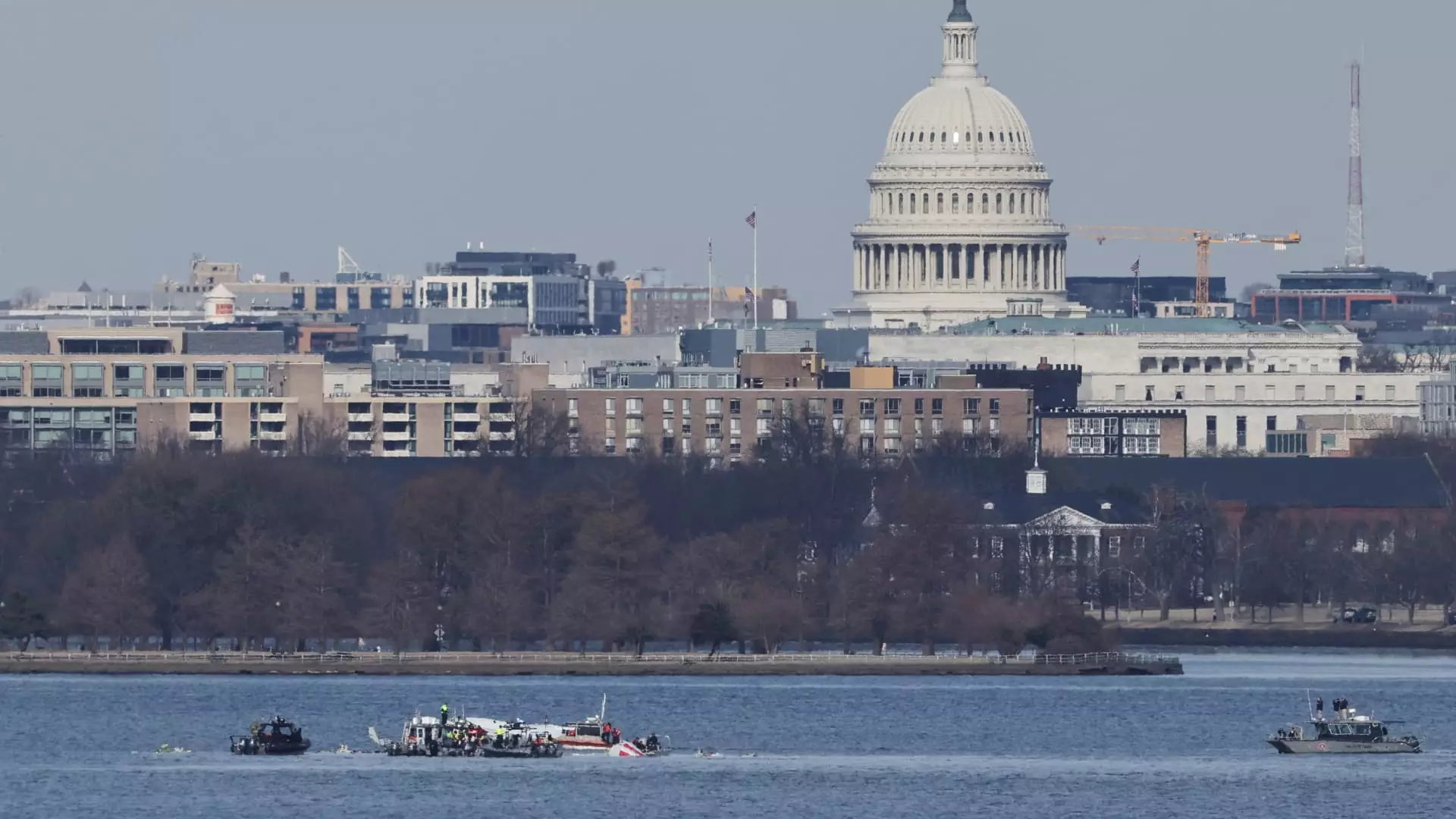The fatal crash between a military Black Hawk helicopter and an American Airlines jetliner on the evening of Wednesday over the Potomac River threatens to shake public confidence in aviation safety and raises pressing questions regarding oversight in congested airspace. With 64 lives lost aboard American Airlines Flight 5342, along with the three crew members of the helicopter, this disaster marks a grievous chapter in U.S. aviation history, being the deadliest since 2001.
The tragic event unfolded shortly before 9 p.m. ET, in the vicinity of Ronald Reagan Washington National Airport while the Bombardier CRJ-700 aircraft was executing its final approach at an altitude of approximately 300 feet. Reports indicate that at this critical juncture, it collided with a military helicopter engaged in an annual proficiency-training flight. The airspace around Washington D.C. is notoriously complex due to the high frequency of helicopter traffic as military operations and law enforcement activities necessitate regular crossings through the region. The Federal Aviation Administration (FAA) has specific height regulations for helicopter flights in these sensitive areas, generally stipulating a maximum altitude of 200 feet.
As the investigation proceeds, officials, including National Transportation Safety Board (NTSB) member Todd Inman, have underlined the existence of designated helicopter tracks that are supposed to guide these aircraft safely—an aspect that raises further questions regarding the compliance of the Black Hawk helicopter. Did it adhere to these prescribed flight paths? If not, what deviations could have contributed to the disaster?
The NTSB has taken the lead in the investigation, emphasizing that thoroughness is essential in verifying the available information. While the preliminary accounts hint at a possible altitude oversight, definitive conclusions are still forthcoming. The NTSB emphasizes the importance of collecting all relevant flight data and cockpit voice recordings, which might illuminate the circumstances leading up to this tragedy.
The Federal Aviation Administration (FAA) has responded to this calamity by instituting stricter flight restrictions for helicopters around the congested airspace near D.C. This move is notable, as such regulatory changes typically indicate serious concerns about the existing protocols and safety measures in place to protect lives in a complex flight environment. However, the effectiveness of these regulations will depend heavily on rigorous enforcement and adherence.
Following the crash, political figures such as Defense Secretary Pete Hegseth and President Donald Trump expressed their concerns over the incident. Trump’s remarks on social media suggested that the helicopter was operating well above its allowed altitude, prompting a dialogue about accountability and oversight. Although these statements came early in the investigation process—an aspect that some analysts have critiqued—the urgency of these public reactions reflects widespread unease regarding aviation safety.
Indeed, the rhetoric surrounding the crash hints at an environment of increased scrutiny for government agencies responsible for maintaining air safety protocols. As lawmakers examine the shortcomings that may have contributed to this accident, the focus on air traffic control staffing raises essential inquiries. Reports indicate that inquiries are revealing inconsistencies in staffing at the Reagan National Airport the night of the collision, with controller shortages possibly exacerbating the situation.
This incident starkly contrasts with the prevailing narrative surrounding U.S. aviation safety over the past decade and a half, which had been marked by a notable absence of fatal commercial crashes. Despite an increase in passenger traffic, which has surged by over 25% since the last significant crash in 2009, the regulatory landscape and the diligence surrounding pilot training and air traffic protocols must now be reassessed.
Continued reports of near misses and alerting instances of congestion at U.S. airports further compound the tragedy. They raise questions about whether safety protocols are being adequately updated to accommodate increasing traffic and the various complexities associated with it. The information from the investigation will be instrumental in determining whether lapses in air traffic control, helicopter navigation, or even broader regulatory shortcomings played a role in this catastrophic event.
The collision over the Potomac is not simply a tragic incident to be recorded in the annals of aviation history; it is a stark reminder of the need for greater vigilance in an environment where safety and coordination can mean the difference between life and death. The challenges that air traffic control face in congested airspaces must prompt an immediate reassessment of not only existing protocols but also staffing practices and technological innovations. As the investigation unfolds, it is crucial that authorities recommit to preventing future tragedies and ensuring that aviation remains a safe mode of transportation for all.


Leave a Reply